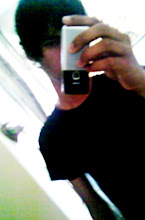For the Photoshop for beginners tutorial on the Magic Wand Tool, open images 06.jpg and 07.jpg, or your own images if preferred.
Press F7 to open the Layers palette (F7 closes it as well).
The picture frame is filled with white, which we need to remove.
- With the Move Tool, click on image number 6 to select it and you will see in the Layers palette that it is titled Background in italics because it is locked. In this state there is a limit to what we can do, so we need to unlock it by changing it to a normal layer.
Double-click on the word Background. In the box that comes on the screen, it is now called Layer 0, by default. This will do so click OK.
To remove the white area inside the frame, we'll use the Magic Wand Tool. - Select the Magic Wand Tool (W) from the toolbox.
In the options bar, there is a field for Tolerance. When a pixel is selected with the Wand, the tolerance level determines how close in colour surrounding pixels must be in order to be included in the selection.
What actually is a pixel anyway? is the desperate plea. Never mind, that'll come soon.... - The area concerned is pure white so a tolerance of 5 will be sufficient. Press Enter.
- With the cursor as the Magic Wand Tool, click on the white area inside the frame.
The dotted selection line will surround the white area. - To soften the cut slightly, go to Select > Feather and type in 1.
Click OK. - Press the Delete key to clear the unwanted white.
Go to Select > Deselect to remove the dotted selection lines.
Notice the grid pattern inside the frame, which always signifies a transparent area on a layer.
We are left with just the picture frame. - Choose the Move Tool (V) in the toolbox.
- Select the cat image with the Move tool and drag it on to the picture frame image, remembering to hold down Shift to put the cat image in the centre.
- The frame needs to be on top, so in the Layers palette drag the cat layer to below the frame layer.
- Go to Edit > Transform > Scale.
To see all the Transform bounding box, it is necessary to expand the overall viewing area by dragging the bottom right corner down and out.
If you run out of screen space, press Ctrl + minus / Cmd + minus to reduce the display size. - Put the cursor on a corner handle of the bounding box and while pressing Shift + Alt move the handle towards the centre to reduce the size of the cat photograph. The bounding box itself tells us the position and size of the photograph in relation to the picture frame.
Stop when the cat photograph is slightly bigger than the frame at the top and bottom. Press Enter. - There is scope to reposition the photograph to the left or right with the use of the arrow keys on the keyboard.

- One more useful function.
Take a close look at the inside edge of the frame. Increase the size with Ctrl + plus / Cmd + plus . Then by holding down the space bar, move the screen around with the mouse.There is a thin white line showing on the inside edge of the picture frame. When cutting away an area, some pixels get left behind right on the edge.
Choose Layer > Matting > Defringe.
A value of 1 or 2 is usually sufficient. OK. This replaces the colour of the fringe pixels with the colour of the nearby pixels. - Choose View > Fit on Screen. At the moment the final image is still separated into layers.
If it is likely that you will want to work on it again then it should be saved in layers, but if not then the image can be flattened to save memory and file space. In the top right corner of the Layers palette is a small arrow; pressing on this arrow reveals a pop-up menu.
Select Flatten Image. The two layers are compressed into one. - The file can be saved and while it is still open, the image can be unflattened with Edit > Undo; but once the file is closed, its fate is sealed.
Special Thanks To Photoshop Tutorial Plus..
Color Picker.
Layers
Clone Stamp Tool
Marquee Tools
Lasso Tool
Lasso Tool using Quick Mask
Crop Tool

0 comments:
Post a Comment